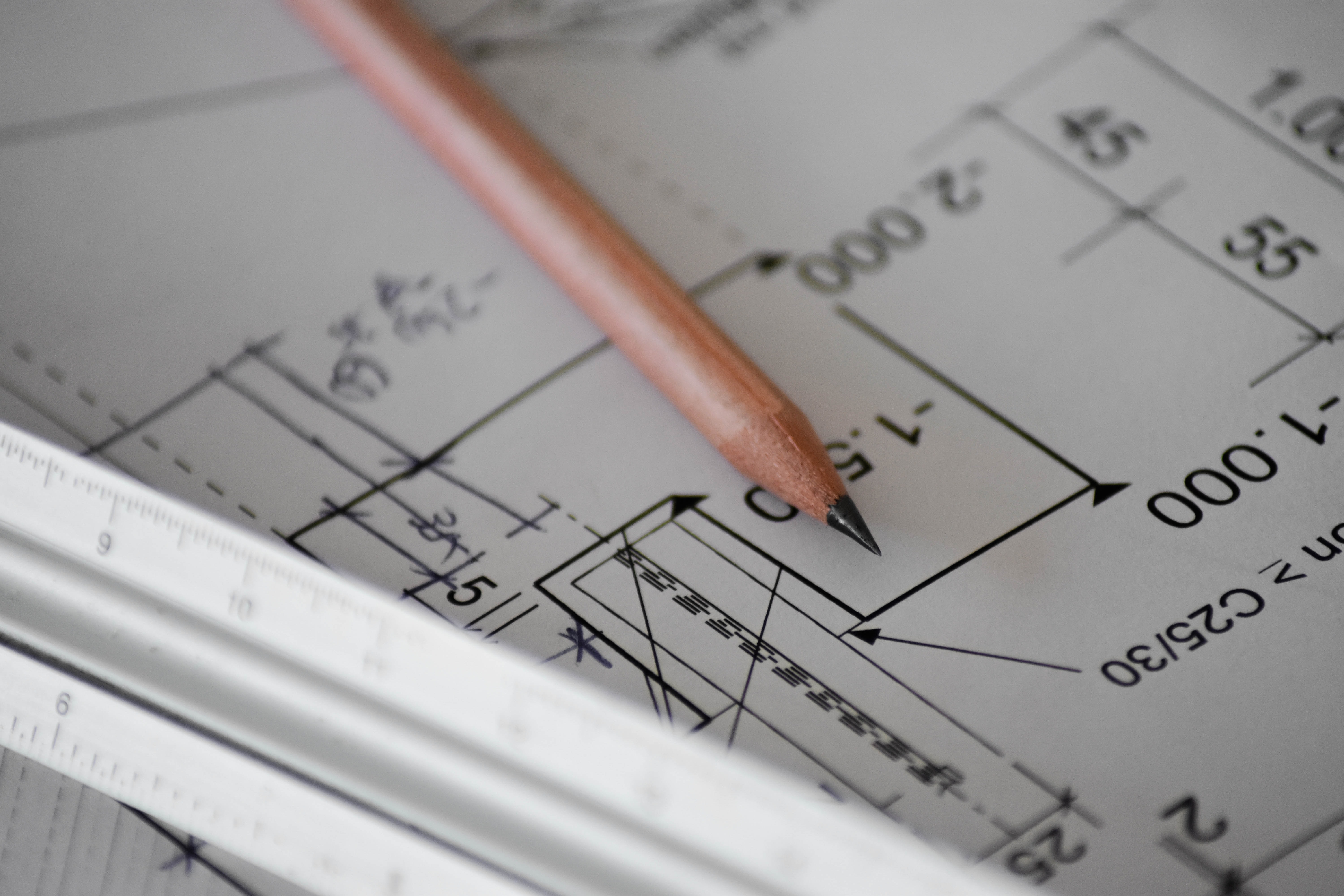The Essential Role of Floor Plans in Design and Construction
Floor plans are the foundational blueprint for any architectural endeavor, providing a bird’s-eye view of a structure’s interior layout. They are indispensable tools in architecture, real estate, interior design, and construction, offering a visual representation of space that aids conceptualization and execution. Understanding floor plans is essential for anyone involved in creating or renovating homes, offices, retail spaces, and public buildings.
This comprehensive guide delves into floor plans, exploring their significance, types, creation processes, examples, and critical components. Whether you’re a prospective homeowner envisioning your dream residence, a real estate agent showcasing properties to clients, or an architect designing innovative spaces, mastering the art of floor plans is crucial for bringing ideas to life and ensuring functional, aesthetically pleasing environments. Join us as we journey through the intricate yet fascinating world of floor plans.

Understanding Floor Plans
Floor plans visually represent a building’s interior layout, providing a detailed view from above. They offer crucial insights into a structure’s spatial organization, flow, and functionality, serving as a roadmap for architects, designers, builders, and homeowners alike. By deciphering floor plans, individuals can better understand how spaces interact and how they can be optimized to suit specific needs and preferences.
Types of Floor Plans
There are several types of floor plans, each serving a distinct purpose and offering unique advantages:
- 2D Floor Plans: Flat representations of a building’s layout, devoid of perspective. They provide technical information and measurements of spaces, making them essential tools for initial planning and visualization.
- 3D Floor Plans: Unlike 2D floor plans, 3D floor plans offer a more immersive and realistic view of a space, allowing viewers to visualize the layout in three dimensions. This enhanced perspective aids in better understanding spatial relationships and can be particularly useful for marketing and presentation purposes.
- Live 3D Floor Plans: Live 3D floor plans take the concept of 3D visualization a step further by allowing users to interact with the virtual space in real time. This dynamic feature enables clients to explore different design options and configurations, making it easier to make informed decisions.
Floor plans serve as invaluable tools for helping clients envision proposed design concepts. By providing a clear, graphical representation of a space’s spatial layout and functionality, floor plans enable clients to grasp how the final design will look and function. This visual clarity fosters effective communication between clients and design professionals, ensuring alignment and minimizing the risk of misunderstandings.
One of the key benefits of floor plans is their ability to mitigate misunderstandings and discrepancies throughout the design and construction phases. By offering a detailed depiction of spatial arrangements, including room dimensions, layout, and flow, floor plans help to clarify design intentions and expectations. Clear documentation minimizes the likelihood of errors and inconsistencies, leading to smoother project execution and enhanced project outcomes.
In real estate, floor plans are powerful sales tools, enabling agents to effectively showcase properties to potential buyers. By presenting a comprehensive overview of the space, complete with room dimensions, layout, and flow, floor plans enhance marketing efforts and attract prospective clients. They provide potential buyers with a clear understanding of the property’s layout and potential, facilitating informed decision-making and expediting sales.
Understanding the significance of floor plans is paramount for translating design concepts into tangible realities, facilitating seamless communication, and ensuring the successful execution of architectural projects. Whether designing a new home, renovating an existing space, or marketing a property for sale, floor plans are indispensable tools that contribute to architectural endeavors’ clarity, efficiency, and success.

Creating Floor Plans
Creating floor plans requires careful consideration of various factors, including client requirements, spatial constraints, and design objectives. Whether you’re an architect, interior designer, or homeowner, crafting a floor plan involves a series of steps to translate ideas into tangible layouts. Here’s a breakdown of the critical considerations and steps involved in creating floor plans:
Key Considerations
Before diving into the actual creation process, it’s essential to consider the following key factors:
- Layout: A floor plan should be tailored to meet the specific needs and preferences of the occupants. Understanding how spaces will be utilized and ensuring a logical flow between rooms is paramount.
- Size: The overall size of the structure, as well as individual room dimensions, must be carefully considered to ensure functionality and comfort. Factors such as existing furniture, the number of occupants, and the intended use of spaces should inform size decisions.
- Lifestyle: Consideration of the occupants’ lifestyle is crucial in determining the layout and features of the floor plan. For example, a family with young children may require designated play areas or a home office for remote work.
- Expenses: Budgetary constraints play a significant role in determining the floor plan’s materials, finishes, and overall design. Balancing cost considerations with aesthetic and functional requirements is essential for a successful project.
- Versatility: Designing flexible spaces that can adapt to changing needs over time is critical to maximizing the longevity and usability of the floor plan. Incorporating multi-functional areas that can serve different purposes ensures adaptability and longevity.
- Sustainability: Incorporating sustainable design principles, such as energy-efficient appliances, renewable materials, and passive heating and cooling strategies, can reduce environmental impact and enhance the overall sustainability of the project.
Steps to Create a Floor Plan
Once the key considerations have been addressed, the following steps can guide the creation of a floor plan:
- Listing Requirements: Compile a comprehensive list of the client’s requirements, including desired room sizes, layout preferences, and specific features or amenities.
- Accurate Measurement: Take precise measurements of the building’s footprint, including walls, doors, windows, and structural elements. Accuracy is crucial for creating a realistic floor plan that accurately reflects the physical space.
- Scaling: Use a consistent scale to translate measurements onto the floor plan, ensuring that the layout fits within the designated space while maintaining proportional accuracy.
- Thinking about Sightlines: Consider sightlines within and between rooms to optimize natural light, views, and circulation paths. Strategic placement of windows, doors, and architectural elements can enhance visual connectivity and spatial quality.
- Organizing the Plan: Arrange rooms and spaces logically and efficiently, considering traffic flow, function, and aesthetics. Experiment with different layouts to find the optimal configuration that meets the client’s needs and preferences.
- Evaluation and Review: Review the floor plan to ensure that it meets all requirements and objectives outlined by the client. Evaluate spatial arrangement, circulation, and usability, making adjustments to optimize the design.
- Collaboration and Feedback: Seek input and feedback from the client, design team, and other stakeholders to refine the floor plan and address any concerns or suggestions. Collaboration ensures the final design aligns with the client’s vision and expectations.
By following these steps and considering key factors, designers can create floor plans that are functional and aesthetically pleasing, and tailored to meet the specific needs and preferences of the occupants. Effective communication, attention to detail, and a thorough understanding of spatial design principles are essential for successful floor plan creation.

Examples of Floor Plans
Floor plans come in various shapes and sizes, each tailored to meet the specific needs and preferences of the occupants. Whether designing a residential home, commercial space, or public building, there are countless possibilities for creating functional and aesthetically pleasing layouts. Here are some examples of different types of floor plans and their applications:
- House Floor Plans: House floor plans depict the layout of a residential home, including rooms, dimensions, and spatial relationships. They range from cozy cottages to sprawling estates, with designs that cater to diverse lifestyles and preferences.
- Apartment Floor Plans: Apartment floor plans showcase the layout of multi-unit residential buildings, detailing individual units and common areas such as lobbies, corridors, and amenities. They vary in size and configuration to accommodate different tenant needs and market demands.
- Bedroom Floor Plans: Bedroom floor plans focus on the layout and arrangement of bedrooms within a home or apartment. They consider privacy, accessibility, and functionality to create comfortable and inviting sleeping spaces.
- Colored Floor Plans: Colored floor plans add visual interest and clarity to traditional black-and-white layouts by incorporating color-coded elements such as walls, furniture, and fixtures. This technique enhances readability and helps clients visualize the design more effectively.
- Office Floor Plans: Office floor plans outline the spatial organization of commercial office spaces, including individual workstations, meeting rooms, and communal areas. They prioritize functionality, productivity, and collaboration while accommodating the specific needs of businesses and employees.
- Bathroom Floor Plans: Bathroom floor plans illustrate the layout and configuration of bathrooms within a home or commercial building. They consider plumbing fixtures, storage solutions, and accessibility to create efficient and stylish bathing spaces.
- Studio Apartment Floor Plans: Studio apartment floor plans showcase compact living spaces that combine sleeping, living, and dining areas into a single open-concept layout. They maximize functionality and flexibility while catering to the needs of individuals or couples living in urban settings.
- Basement Floor Plans: Basement floor plans reveal the layout of below-grade spaces in residential homes, including basements, cellars, and lower levels. They often feature recreational areas, storage rooms, and utility spaces designed to maximize the use of available square footage.
- Living Room Floor Plans: The floor plans focus on the design and arrangement of living spaces within a home, emphasizing comfort, functionality, and aesthetics. They incorporate furniture layouts, traffic flow, and focal points to create inviting and versatile gathering areas.
These examples illustrate the versatility and adaptability of floor plans in various architectural contexts. Whether designing a cozy bungalow or a bustling office complex, floor plans are crucial in shaping the built environment and creating spaces that enhance the quality of life and productivity.
Components and Symbols in Floor Plans
Floor plans rely on a range of symbols and components to convey crucial information about the layout and design of a space. These symbols act as visual indicators representing architectural elements, furniture, fixtures, and other features within the floor plan. Understanding these symbols is paramount for interpreting and communicating design concepts effectively. Below are some standard components and symbols frequently encountered in floor plans:
Walls
Walls are depicted by solid lines that outline the boundaries of rooms and spaces within the floor plan. Various types of walls, such as interior, exterior, and partitions, may be distinguished using different line weights or styles.
Doors
Doors are denoted by openings within the walls, typically depicted by a straight line with an arc indicating swing direction. Different types of doors, including hinged, sliding, and pocket doors, may be represented using specific symbols or annotations.
Windows
Windows are illustrated as wall openings, often portrayed as rectangles or arcs to indicate their size and placement. Symbols may also signify the type of window, such as casement windows, double-hung windows, or picture windows.
Stairs
Stairs are represented by symbols that convey their location, direction, and configuration within the floor plan. The symbols may vary depending on the type of stairs, whether straight, spiral or switchback stairs.
Furniture
Furniture symbols showcase the arrangement and placement of furniture within rooms and spaces. Common furniture symbols encompass sofas, beds, tables, chairs, and cabinets. These symbols aid in visualizing the functional layout of the space and assist in furniture placement and arrangement.
Dimensions
Dimensions indicate the size, length, and width of the floor plan’s rooms, spaces, and architectural elements. They offer precise measurements that ensure accuracy and clarity in the design documentation.
By integrating these components and symbols into floor plans, designers can effectively convey design concepts, spatial relationships, and functional layouts to clients, contractors, and other stakeholders. Familiarity with these symbols is imperative for accurately interpreting floor plans and facilitating seamless collaboration throughout the design and construction phases.

Conclusion
Floor plans are indispensable tools in architecture, interior design, real estate, and construction, providing a comprehensive blueprint for the layout and organization of spaces within a building. From residential homes to commercial offices, floor plans serve as visual representations of design concepts, guiding the implementation of architectural vision and facilitating effective communication between designers, clients, and builders.
Throughout this guide, we have explored the significance of floor plans, delving into their creation process, key components, and diverse applications. We’ve discussed how floor plans help clients visualize design concepts, prevent misunderstandings, and streamline construction processes. We’ve also examined the various types of floor plans, from basic 2D layouts to immersive 3D representations, and explored examples of their use in different architectural contexts.
As we conclude our exploration of floor plans, it’s evident that these documents play a crucial role in shaping the built environment and creating spaces that are functional, aesthetically pleasing, and tailored to occupants’ needs. By mastering the art of floor plans and understanding their components and symbols, designers can effectively translate ideas into reality, fostering creativity, innovation, and excellence in architectural design.
Whether you’re a seasoned architect, aspiring designer, or homeowner embarking on a renovation project, this guide has provided valuable insights into the world of floor plans and inspired you to explore the endless possibilities they offer in shaping our spaces. As technology advances and design trends evolve, one thing remains constant: the timeless importance of floor plans in creating spaces that enrich our lives and enhance our built environment.

Jason Somers, President & Founder of Crest Real Estate
With over 15 years of professional experience in the Los Angeles luxury real estate market, Jason Somers has the background, judgement and track record to provide an unparalleled level of real estate services. His widespread knowledge helps clients identify and acquire income producing properties and value-ad development opportunities.
Learn more about Jason Somers or contact us.



